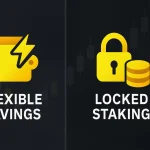Charities and donors are both asking the same question: can we make giving more transparent, faster, and easier across borders without ballooning administrative costs? The answer is increasingly yes. With practical, real-world Blockchain Use in Charity and Donations, nonprofits can prove impact on-chain, donors can verify funds flow in minutes, and operational overhead can shrink dramatically.
This guide focuses on actionable tactics you can deploy today—from multi-sig wallets and stablecoin rails to smart-contract disbursements, zero-knowledge attestations, and public dashboards—so that every dollar donated can be traced and measured without sacrificing beneficiary privacy.
Along the way, if you need a fast way to acquire crypto for donations or to fund your nonprofit treasury, consider using Join Binance with code CRYPTONEWER for 20% fee discount and up to $10,000 in benefits. Terms and eligibility may apply.
Why charities struggle with trust and efficiency
- Opaque cash flows: Traditional banking systems make it hard for donors to see where funds go in real time.
- Cross-border friction: Remittances can take days and incur high fees, especially to underserved regions.
- Impact verification: Proving outcomes often requires slow audits and paper-based reports.
- Data privacy: Beneficiary data may be at risk if shared too widely with intermediaries.
Blockchain reduces these frictions by combining transparency with programmable money, enabling on-chain philanthropy that is verifiable end to end.
What blockchain changes in practice
- Radical transparency: Public ledgers let anyone audit transaction histories and balances via explorers like Etherscan or Polygonscan.
- Programmable donations: Smart contracts release funds automatically upon verified milestones.
- Borderless rails: Stablecoins (e.g., USDC) move globally with low fees and near-instant settlement.
- Verifiable impact: Oracles and proof systems attest to real-world outcomes without leaking sensitive data.
Core architecture for nonprofit treasuries
1) Multi-signature custody
– Set up a multi-sig wallet (e.g., Gnosis Safe) to split control among executives, board members, and finance leads, reducing single-point failure risk.
– Use role-based policies for spending thresholds (e.g., small disbursements require 2 signatures; large grants 3–5 signatures).
2) Stablecoin-first strategy
– Prioritize stablecoin donations (USDC/USDT) to minimize volatility and simplify accounting.
– Select an efficient chain (e.g., Ethereum L2, Polygon, BNB Smart Chain) balancing fees, tooling, and donor familiarity.
3) Smart-contract disbursement
– Use milestone-based contracts for grants: funds unlock when an oracle confirms delivery (e.g., X school meals, Y solar lanterns distributed).
– Add refund logic: if milestones aren’t met by a deadline, allow donors or the treasury to claw back funds.
4) Privacy-preserving impact
– Publish aggregate impact metrics on-chain using zero-knowledge proofs so donors see verified outcomes without exposing identities.
– Issue “proof of impact” attestations as cryptographic badges to field partners.
5) Public transparency dashboard
– Create a live dashboard that surfaces: wallet balances, inbound donations, disbursement schedules, and impact oracles.
– Link directly to explorers for verification. You can embed Etherscan links for each transaction.
Donor journey that builds trust
- Verification first: Donors confirm the charity’s official wallet address from the charity’s website and cross-check on a block explorer.
- Donation: They transfer stablecoins to the listed address or use a QR code.
- Live tracking: The donor refreshes the charity’s public dashboard to see the transaction confirmation and allocation plan.
- Proof of impact: When milestones are reached, donors receive an on-chain receipt or a non-transferable “impact token” acknowledging their contribution.
To get started as a donor or nonprofit acquiring crypto safely, you can register with Binance using code CRYPTONEWER for a 20% fee discount and up to $10,000 in benefits and then transfer to your charity wallet. Always verify addresses before sending.
Implementation checklist for nonprofits
- Governance and wallets
- Register a Gnosis Safe multi-sig and document signers and policies.
- Separate hot wallets (operational) and cold storage (treasury reserves).
- Asset policy
- Accept stablecoins by default, publish supported networks and addresses.
- Outline a conversion policy to fiat for operational expenses.
- Smart contracts
- Use audited contracts (e.g., OpenZeppelin) for milestone-based grants.
- Add emergency pause and clawback functions.
- Oracles and attestations
- Connect Chainlink or similar oracles for milestone verification.
- Explore zero-knowledge attestations to protect beneficiary privacy.
- Transparency
- Publish a live dashboard with donation flow, reserves, and disbursement cadence.
- Link every grant to on-chain transactions and off-chain reports.
- Compliance
- Collect necessary KYC/AML data where required for large donors.
- Maintain tax-compliant receipts with transaction hashes and fiat equivalence at time of donation.
Risk management and best practices
- Volatility: Hold stablecoins for short-term needs; use risk policies for any non-stable exposure.
- Key security: Store signer keys with hardware wallets; use a multisig to mitigate loss risk.
- Chain selection: Favor chains with high uptime, broad wallet support, and low fees to prevent donor friction.
- Beneficiary access: If recipients are unbanked or lack crypto literacy, partner with local cash-out providers or NGOs that can convert on arrival.
- Refunds and disputes: Predefine refund scenarios and publish them on your transparency page.
Compliance, accounting, and tax receipts
- Recordkeeping: Save transaction hashes, timestamps, token symbols, fiat equivalents, and exchange rates at donation time.
- Donor privacy: Share public receipts while pseudonymizing donor info unless they opt-in to recognition.
- Jurisdictional rules: Check whether your country treats crypto as property or currency for tax purposes and adapt receipts accordingly.
Real-world momentum
- UNICEF CryptoFund has experimented with funding startups in crypto for speed and transparency.
- Save the Children has accepted crypto donations, demonstrating appetite among mainstream NGOs.
- Aggregators like The Giving Block have enabled thousands of nonprofits to accept crypto donations across multiple chains.
These examples show that on-chain philanthropy isn’t hypothetical—it’s already helping organizations modernize their donation rails.
Tooling stack to accelerate adoption
- Wallets and custody
- Gnosis Safe for multi-sig
- Hardware wallets for signers
- Smart contracts and automation
- OpenZeppelin for audited templates
- Defender/Relayers for scheduled operations
- Oracles and data
- Chainlink for milestone verification
- The Graph for indexing on-chain data
- Analytics and dashboards
- Dune for custom dashboards
- Etherscan/Polygonscan for verification links
- Identity and attestations
- Soulbound/attestation frameworks for proof-of-impact badges
Funding flows that donors love to see
- Restricted gifts on-chain: Donors earmark funds for a specific program wallet.
- Time-locked treasuries: Program budgets vest monthly to reduce mismanagement risk.
- Escrowed grants: Release funds only after oracle-confirmed milestones.
- Recurring donations: Streaming payments provide predictable cash flow and transparent schedules.
Crypto donation UX that reduces friction
- Provide QR codes and short ENS/BNS names so donors avoid address typos.
- Offer a one-click “copy address” with network tags (e.g., USDC on Polygon).
- Publish fee guidance and a recommended chain for low-cost micro-donations.
- Give immediate on-chain receipts with transaction links and fiat value at donation time.
Getting started as a donor or nonprofit
- Donors
- Acquire crypto through a reputable exchange, then donate stablecoins.
- Verify the charity’s address on at least two sources.
- Track your donation on a public dashboard and save your receipt.
- Nonprofits
- Launch your multi-sig, publish addresses, and set an asset policy.
- Pilot one program with on-chain disbursement and public tracking.
- Collect donor feedback and iterate on UX.
If you need an on-ramp to fund your giving or your nonprofit wallet, register at Binance with referral code CRYPTONEWER for 20% fee discount and up to $10,000 in benefits. After purchase, transfer to your charity’s multi-sig wallet and reference your dashboard for proof-of-transfer.
Metrics that matter for on-chain philanthropy
- Donation-to-program ratio: Proportion of funds disbursed to frontline activities.
- Time-to-disbursement: Median time from donation receipt to beneficiary payout.
- Verification coverage: Share of disbursements tied to oracle-verified milestones.
- Fee efficiency: Average network fees per donation and per disbursement.
- Transparency engagement: Dashboard visits, explorer clicks, receipt downloads.
Frequently asked questions
- Are crypto donations tax-deductible?
- Often yes, if your nonprofit has appropriate status and follows jurisdictional rules. Keep detailed records with hashes and timestamps.
- How do we avoid volatility?
- Accept and hold stablecoins for operational budgets; convert promptly if your policy requires fiat.
- What about environmental impact?
- Many major networks now use proof-of-stake, which significantly reduces energy usage compared to proof-of-work.
- Can donors remain private?
- Pseudonymous giving is possible. For large donations, compliance checks may be required depending on local laws.
- What if a grant milestone fails?
- Use smart contracts with refund or reallocation logic, and document this policy on your transparency page.
Sample policy excerpt for your website
- We accept stablecoin donations on low-fee networks and provide immediate on-chain receipts.
- Our treasury is managed via a multi-signature wallet with documented signers and thresholds.
- All program disbursements are recorded on-chain and, when applicable, released via milestone-based smart contracts.
- We publish a live dashboard with transaction links and quarterly narrative reports.
- We protect beneficiary privacy using aggregated metrics and privacy-preserving attestations.
Ready to explore practical Blockchain Use in Charity and Donations for your organization or your personal giving? Acquire crypto safely, then put it to work with transparent disbursements and verifiable impact. Start by registering through Binance using referral code CRYPTONEWER to access a 20% fee discount and up to $10,000 in benefits, then follow the steps above to move funds to your verified charity wallet and monitor outcomes on-chain.





